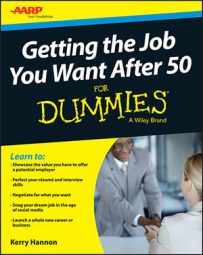Copyright © 2015 AARP. All rights reserved.
You might be dissuaded from pursuing your dream job after 50 if health insurance isn’t provided by your employer. Don’t let that stop you. If you’re not eligible for an employer-sponsored health insurance plan, shop for insurance on the new healthcare exchanges via Healthcare.gov.
Don’t drop your current job insurance (you can continue it for a time under a law known as COBRA) until you have a new policy in place. Note that with COBRA, you’re likely to lose your employer’s contribution, so be prepared for your health insurance premium to double or worse.
Check your state insurance department website, too, because it may list health insurance choices for residents. Also be sure to ask your doctors which insurance carriers they accept.
Crunch the numbers when comparing health insurance plans. You may save money by choosing a high-deductible plan and using a health savings account (HSA) to pay for medical, dental, and medication costs with untaxed money from your HSA. But you may not. To compare plans, take the following steps:
Multiply your monthly health insurance premium by 12 months under one of the plans you’re considering.
Calculate or estimate your total annual out-of-pocket costs under this particular plan.
This is the tricky part. If the plan covers everything except a small deductible, simply use the deductible as your total. Likewise, if the deductible is high and you expect your out-of-pocket costs will meet the deductible, use the deductible as your total. But if you’re healthy and rarely meet your deductible, you may want to estimate your annual out-of-pocket costs based on previous years’ amounts.
Perform Steps 1 and 2 for each plan you’re considering.
Compare the plans.
For example, suppose that you’re comparing a gold plan that covers everything except for a $200 deductible and costs $680 per month to a bronze plan with a $3,000 deductible that costs $180 per month, and you think you’d probably meet that $3,000 deductible under the bronze plan:
Annual cost of gold plan = ($680 × 12) + $200 = $8,360
Annual cost of bronze plan = ($180 × 12) + $3,000 = $5,160
In addition, you could have an HSA under the bronze plan and use it to pay your out-of-pocket expenses with non-taxed dollars, saving you additional money, so the bronze plan would be best, all other things being equal (such as whether the doctors you want to see accept that particular plan).
You may be charged a small annual fee of about $40 for a health savings account from a no-load mutual fund company, such as Vanguard or Fidelity. You can contribute up to $3,350 to a health savings account for individual coverage (a maximum of $4,350 if you’re 55 or older). For families, the limit on contributions is $6,650; $7,650 if you’re 55 or older. Most banks also have HSAs.
If you’re shopping for an individual health policy, you can also compare premiums, deductibles, and out-of-pocket costs at such websites as eHealth, GoHealth, Insure.com, and NetQuote. Always check to see whether your preferred doctors are in-network before you select a plan. Or have a local health insurance agent to shop around on your behalf. Look for one at the National Association of Health Underwriters website.

